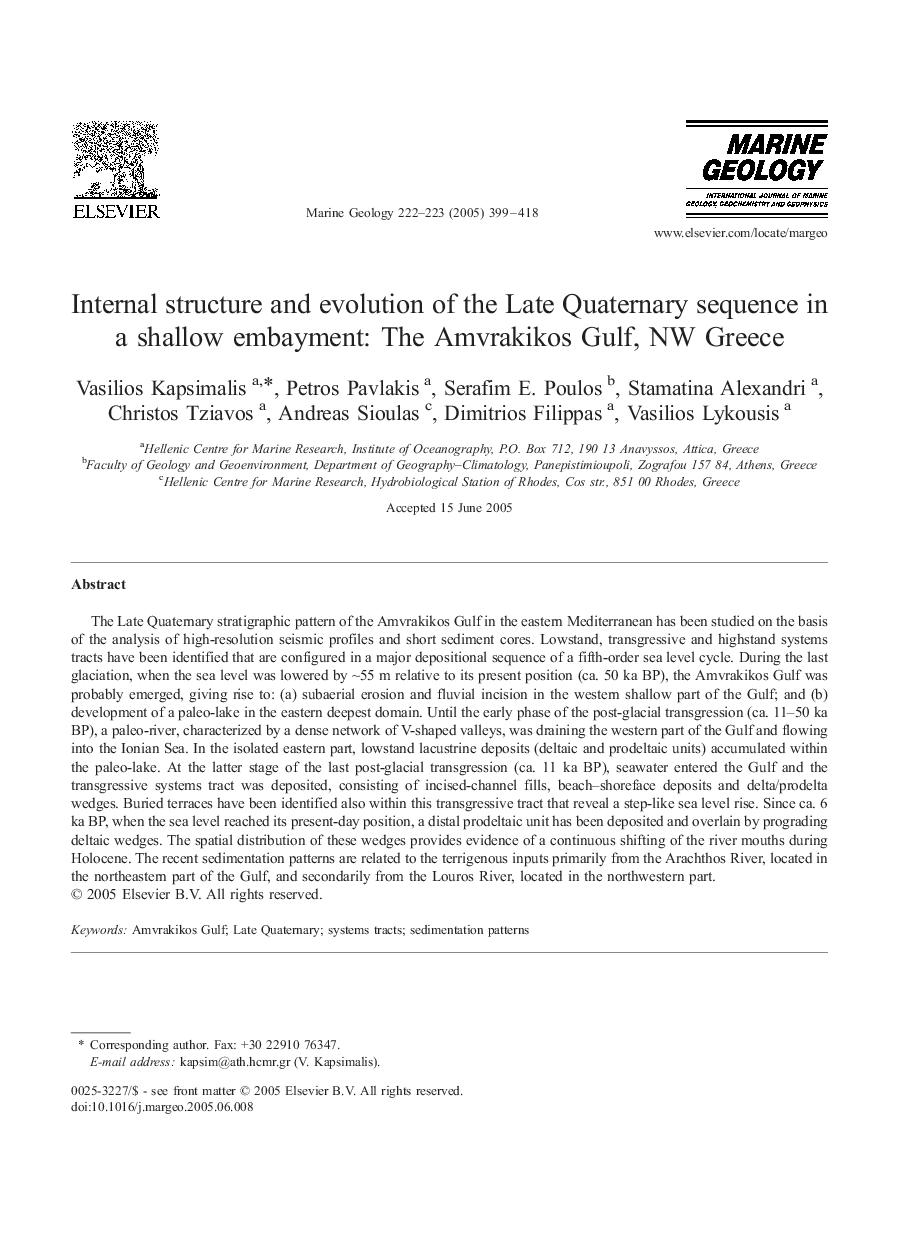| کد مقاله | کد نشریه | سال انتشار | مقاله انگلیسی | نسخه تمام متن |
|---|---|---|---|---|
| 9532473 | 1639220 | 2005 | 20 صفحه PDF | دانلود رایگان |
عنوان انگلیسی مقاله ISI
Internal structure and evolution of the Late Quaternary sequence in a shallow embayment: The Amvrakikos Gulf, NW Greece
دانلود مقاله + سفارش ترجمه
دانلود مقاله ISI انگلیسی
رایگان برای ایرانیان
کلمات کلیدی
موضوعات مرتبط
مهندسی و علوم پایه
علوم زمین و سیارات
ژئوشیمی و پترولوژی
پیش نمایش صفحه اول مقاله

چکیده انگلیسی
The Late Quaternary stratigraphic pattern of the Amvrakikos Gulf in the eastern Mediterranean has been studied on the basis of the analysis of high-resolution seismic profiles and short sediment cores. Lowstand, transgressive and highstand systems tracts have been identified that are configured in a major depositional sequence of a fifth-order sea level cycle. During the last glaciation, when the sea level was lowered by â¼55 m relative to its present position (ca. 50 ka BP), the Amvrakikos Gulf was probably emerged, giving rise to: (a) subaerial erosion and fluvial incision in the western shallow part of the Gulf; and (b) development of a paleo-lake in the eastern deepest domain. Until the early phase of the post-glacial transgression (ca. 11-50 ka BP), a paleo-river, characterized by a dense network of V-shaped valleys, was draining the western part of the Gulf and flowing into the Ionian Sea. In the isolated eastern part, lowstand lacustrine deposits (deltaic and prodeltaic units) accumulated within the paleo-lake. At the latter stage of the last post-glacial transgression (ca. 11 ka BP), seawater entered the Gulf and the transgressive systems tract was deposited, consisting of incised-channel fills, beach-shoreface deposits and delta/prodelta wedges. Buried terraces have been identified also within this transgressive tract that reveal a step-like sea level rise. Since ca. 6 ka BP, when the sea level reached its present-day position, a distal prodeltaic unit has been deposited and overlain by prograding deltaic wedges. The spatial distribution of these wedges provides evidence of a continuous shifting of the river mouths during Holocene. The recent sedimentation patterns are related to the terrigenous inputs primarily from the Arachthos River, located in the northeastern part of the Gulf, and secondarily from the Louros River, located in the northwestern part.
ناشر
Database: Elsevier - ScienceDirect (ساینس دایرکت)
Journal: Marine Geology - Volumes 222â223, 15 November 2005, Pages 399-418
Journal: Marine Geology - Volumes 222â223, 15 November 2005, Pages 399-418
نویسندگان
Vasilios Kapsimalis, Petros Pavlakis, Serafim E. Poulos, Stamatina Alexandri, Christos Tziavos, Andreas Sioulas, Dimitrios Filippas, Vasilios Lykousis,